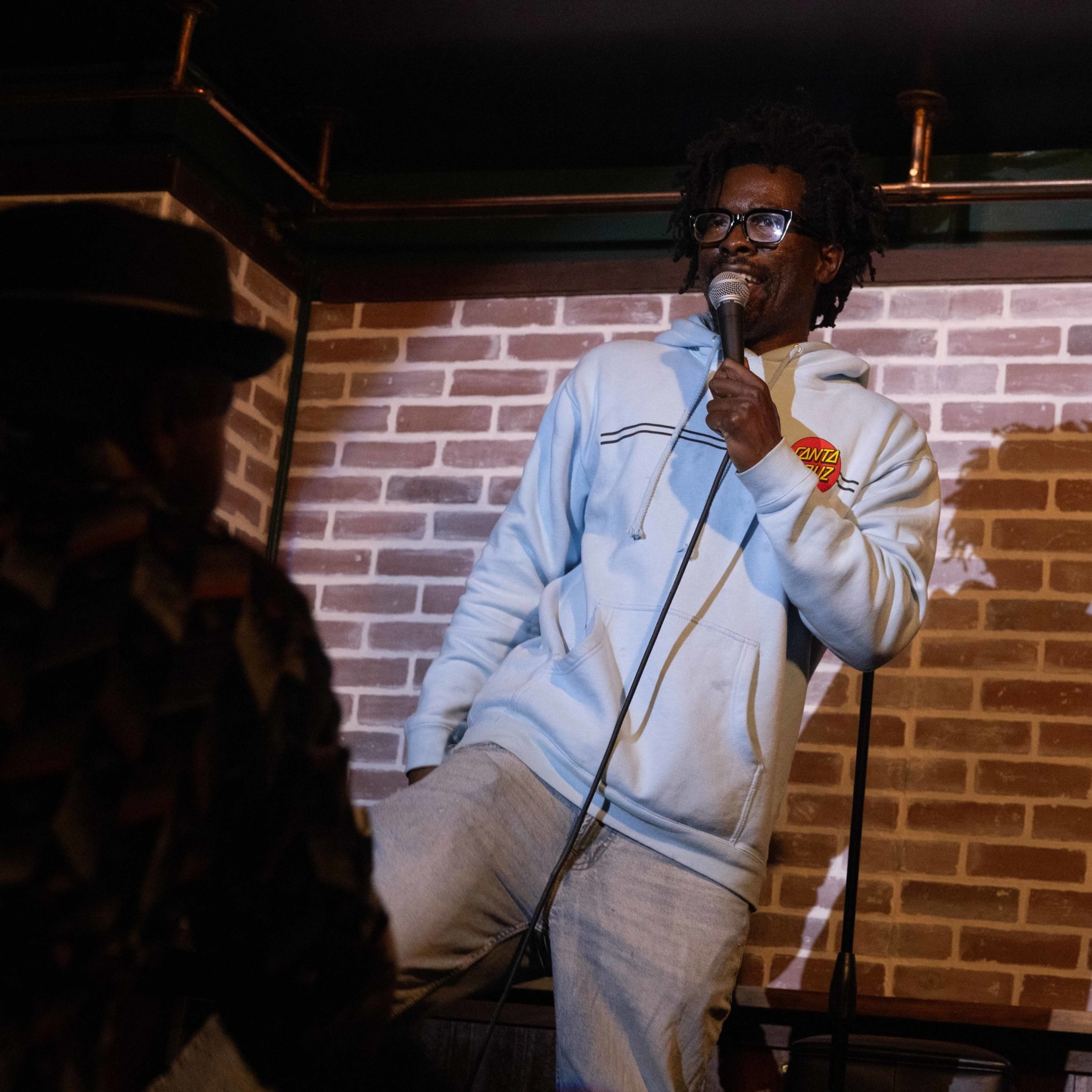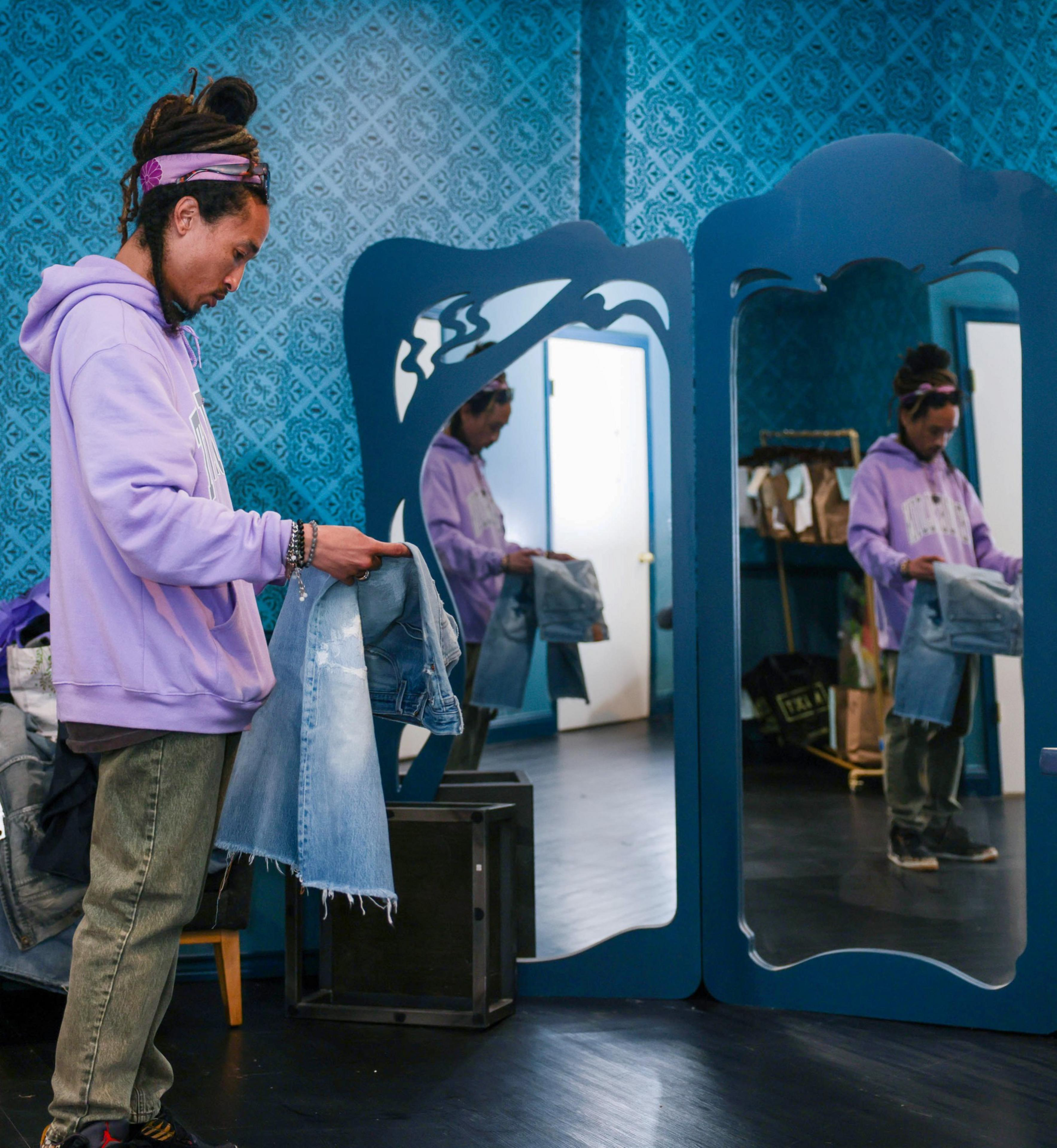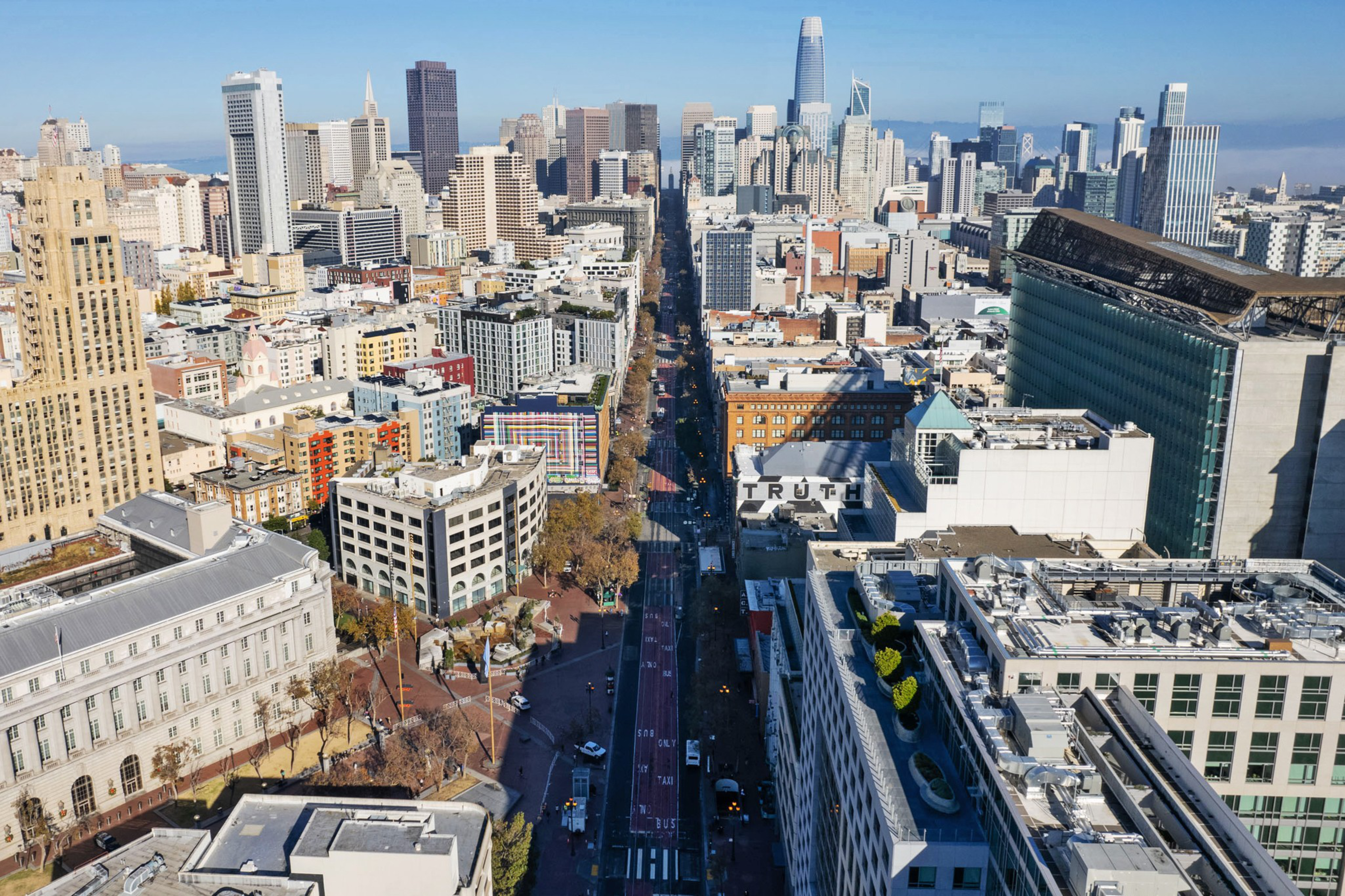“San Francisco is the greatest city in the motherfucking world,” said comedian “Dirty” Mike, kicking off a recent set at the city’s newest comedy club, The Function (opens in new tab), at 1414 Market St. “This place is like Alice in Wonderland.”
The crowd of young people sipping drinks laughed as Mike launched into jokes about uniquely SF joys, like skateboarding on drugs at 3 a.m. with a cigarette in hand. The weeknight turnout was solid for a venue on a typically desolate stretch of Market Street that’s only a few weeks old. But the Function’s founders have been heavyweights in the SF nightlife scene for years: The venue combines the the efforts of Stroy Moyd, founder of HellaFunny (opens in new tab); Johnny Hayes (opens in new tab), who launched events aggregator Funcheap (opens in new tab); and Ludovic Racinet (opens in new tab), who has owned Tunnel Top and Bar Fluxus.
“Our partnership is perfect,” said Racinet. “And the location is perfect. It’s in the middle of town, it’s close to the freeway, and there’s this resurgence of Mid-Market.”

The Function’s opening adds to budding momentum in one of downtown San Francisco’s most beleaguered neighborhoods. A slew of recent or impending openings and investment aim to shift the area from a dead zone to a hub of activity. As offices have emptied (including the recent departure of Elon Musk’s X), a handful of businesses are betting the neighborhood’s renaissance is underway.
Beyond The Function, an outpost of the Sunset’s Red Tail bar (opens in new tab) plans to open at 992 Market St., right next door to the forthcoming “MexiTerranean” joint Habibi’s Birria (opens in new tab). Both are tentatively slated to start welcoming guests in late August or early September.
“We saw this opportunity and didn’t think twice,” said Ivan Gil, co-owner of Habibi’s Birria, which launched a halal fusion restaurant four years ago in Hayward, expanded to San Leandro and had been searching for an SF landing spot for months. The restaurant is known for its hefty tacos served with a side of rich consommé.
The restaurant’s owners scouted the area around 998 Market St. and felt good about the amount of foot traffic and the city’s efforts to clean up the streets, Gil said. “We’re hoping to be part of the new growth.”
Likewise, the founders of Red Tail have had curious people popping their heads into the space for weeks to congratulate the team on the impending launch. The wine bar’s first year of rent has been subsidized by the Mid-Market Business Association and Foundation, which is focused on increasing the corridor’s vibrancy. The organization is boosting “art-enomics” — a combination of economic development and supporting the arts — to help revive the neighborhood, according to executive director Steve Gibson.
Gibson readily admits the neighborhood is not the first choice for businesses, but by increasing creative outlets, including through a paid busker program (opens in new tab) and grants for artists, he aims to bring more energy, which can translate to more commercial tenants.
For Red Tail co-founder Wes Wakeford, the emphasis on artists instead of tech companies feels like the right move: “The city went all in on betting that’s what would fix Market Street, but when time’s got tough, those guys packed up,” he said.
Now, he countered, the neighborhood can take advantage of depressed rents and increased city grants to amp up art and entertainment.
For example, Mr. Tipples and Harlan Records both recently received city grants (opens in new tab) to put on events and programming, including a “jazz passport” to bring people to different venues downtown. The Hibernia, an old bank turned private venue, has also embraced live performances and booked an electronic dance music residency in October (opens in new tab). Holy Stitch, a denim design factory, is welcoming artists and the design-curious into its studio.
“It’s like watching a plant grow,” said founder Julien Prince Dash, both of his shop’s development as well as the overall tenor in Mid-Market: Even if you can’t clock the day-to-day changes, there’s forward momentum.

“We’re being this beacon and this hub that’s kind of shooting rainbows out onto Market Street,” Dash said. He’s noticed that the block’s drug dealers won’t station themselves around his entrance, and people on the street generally try to be respectful of his space.
“I used to clean up the feces off my storefront, and now people do it for me,” Dash said.
Indeed, Mid-Market is home to one of the worst corners in San Francisco, where illicit substances trade hands and those experiencing mental health issues congregate. The Mid-Market Foundation partners with non-profit Urban Alchemy to try to rehabilitate the area. The Function, meanwhile, has hired its own private security guard for evenings it hosts comedy shows to make sure visitors feel safe.
Saluhall, the food hall from Ikea’s parent company that opened in April, bustled with visitors on several recent afternoons, and leadership said the neighborhood has “a strong sense of being in this together.”
“The challenges make it all the more rewarding, and we are committed to making a difference on Market Street,” Saluhall managing director Elise von Hellion said in a statement.
For Wakeford, the addition of more businesses and events could turn Mid-Market’s seedy reputation around: “I think we can break that cycle of bad news by making things exciting for people and giving them a reason to turn out,” he said. “When you bring more people into an area, it helps push out the bad element.”
